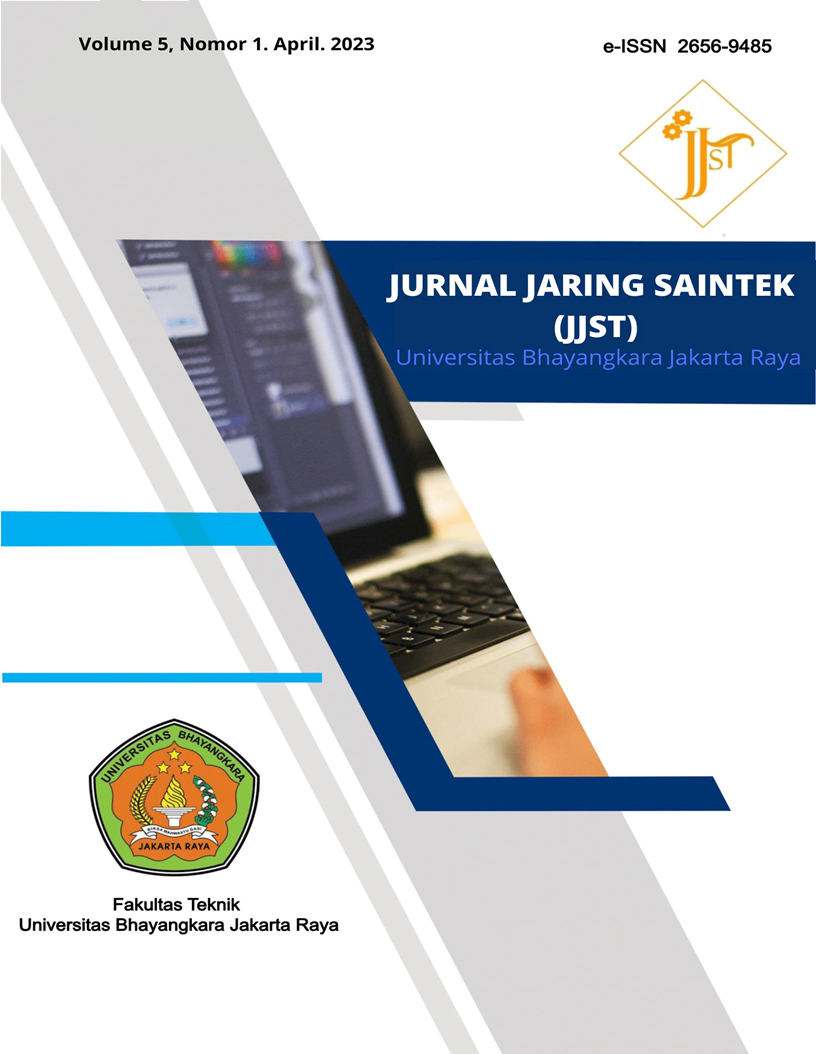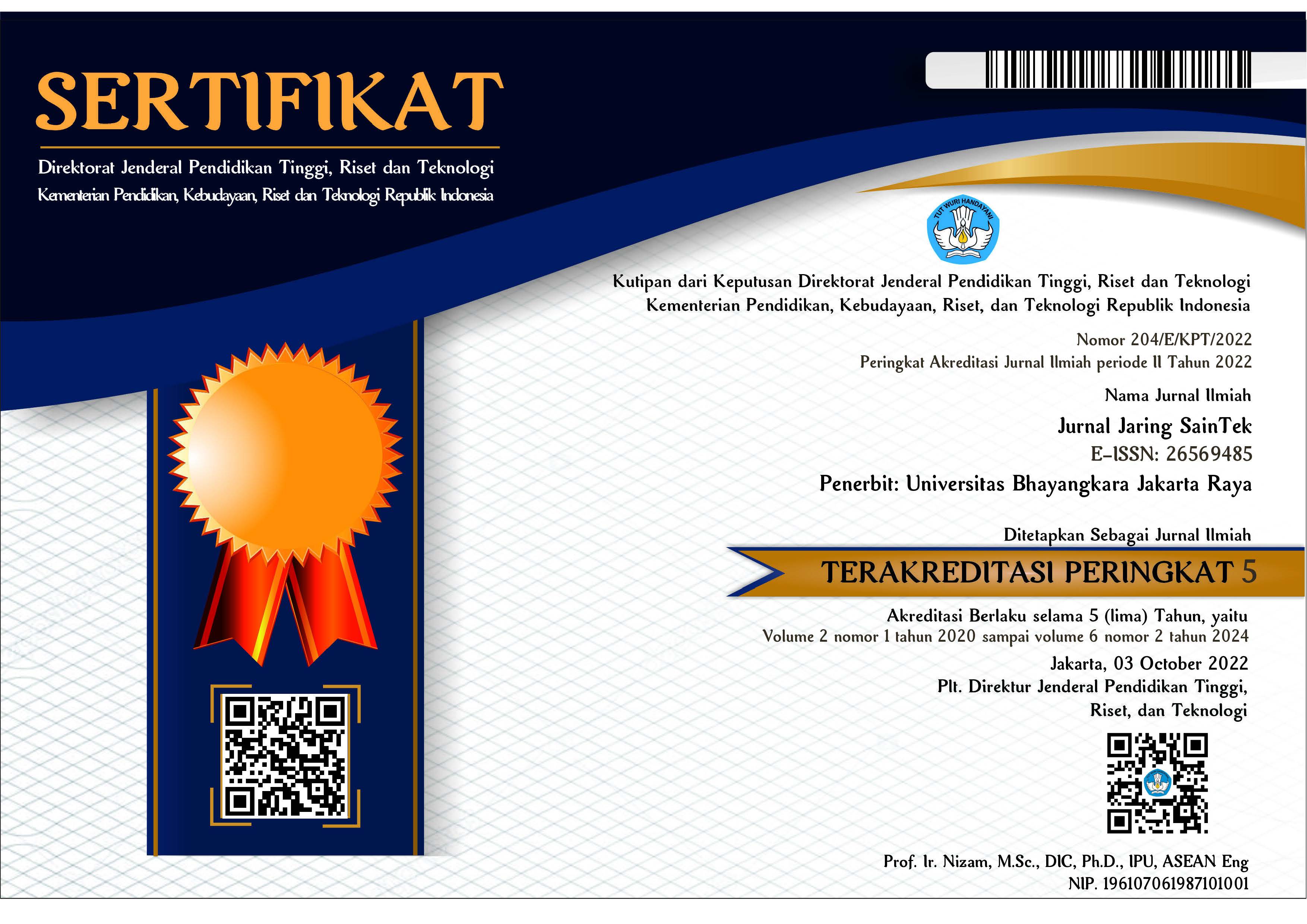Aplikasi Transformasi Reduction to Pole (RTP) Menggunakan Matlab dalam Pengolahan Data Magnetik WDMAM pada Wilayah Tapal Kuda -Jawa Timur
DOI:
https://doi.org/10.31599/zeeq1c34Keywords:
magnetic method, RTP, built in matlab function, WDMAM data, Tapal Kuda regionAbstract
In the magnetic method, the anomalous magnetic field is caused by a dipole magnetic field source. The magnetic anomaly map is complex and relatively challenging to read because each place has a different angle of inclination and declination. The use of a RTP filter is crucial to overcoming the difficulty in magnetic data interpretation. The RTP transformation has been successfully implemented and applied to the WDMAM magnetic data for Tapal Kuda Region-East Java, using the built-in Matlab algorithms. The RTP application in this region uses the values of the inclination angle I = -32.82° and the declination angle D = 0.72°. According to the RTP results' magnetic anomaly, there has been a change in the magnetic field's range from (-345.51 nT to 282.30 nT) to (-975.37 nT to 782.38 nT). The locations of the closures of the positive and negative magnetic anomalies also changed. The middle to northern portions of the Tapal Kuda Region are dominated by a positive magnetic anomaly that is assumed to be related to the Quaternary Volcanic Zone. The positive anomaly closures moved toward the west, specifically toward Mount Bromo and Mount Argopuro. The Horseshoe Region's southern edge is dominated by a negative magnetic anomaly that is assumed to be associated with the Southern Mountain Zone. The negative anomaly closure also shifted location, to the southwest, approaching Mount Semeru..
Downloads
References
Balai Bahasa Jawa Timur. (2021). Tapal Kuda. https://balaibahasajatim.kemdikbud.go.id/2021/01/28/tapal-kuda/
Bhattacharyya, B. K. (1965). Two‐Dimensional Harmonic Analysis as a Tool For Magnetic Interpretation. GEOPHYSICS, 30(5), 829–857. https://doi.org/10.1190/1.1439658
Blakely, R. . (1996). Potential Theory in Gravity and Magnetic Applications. Cambridge University Press.
BritishGeologicalSurvey. (2022). The Earth’s Magnetic Field: An Overview. http://www.geomag.bgs.ac.uk/education/earthmag.html
Cooper, G. R. J., & Cowan, D. R. (2008). Edge enhancement of potential-field data using normalized statistics. GEOPHYSICS, 73(3), H1–H4. https://doi.org/10.1190/1.2837309
Ervin, C. P. (1976). Reduction to the magnetic pole using a fast fourier series algorithm. Computers & Geosciences, 2(2), 211–217. https://doi.org/10.1016/0098-3004(76)90108-4
Ferreira, W., & Shukowsky, W. (2013). Estimation of the total magnetization direction using Helbig’s method: A comparative study using the Reduction to the Pole operator. 13th International Congress of the Brazilian Geophysical Society & EXPOGEF, Rio de Janeiro, Brazil, 26–29 August 2013, 492–497. https://doi.org/10.1190/sbgf2013-104
Google Earth. 2022. Wilayah Tapal Kuda pada Google Earth. https://earth.google.com. Diakses pada tanggal 17 November 2022.
Guo, H., Wang, M., Han, S., Chang, C., & Yao, Y. (2022). Reduction-to-the-pole method for aeromagnetic three-component data in different latitudes. Applied Geophysics. https://doi.org/10.1007/s11770-022-0978-7
Guo, L., Shi, L., & Meng, X. (2013). The antisymmetric factor method for magnetic reduction to the pole at low latitudes. Journal of Applied Geophysics, 92, 103–109. https://doi.org/10.1016/j.jappgeo.2013.02.018
Junaidi, A. (2016). Pemetaan Struktur Bawah Permukaan Ranu Betok Gunung Lamongan Menggunakan Metode Magnetik [Universitas Jember]. http://repository.unej.ac.id/handle/123456789/78129
Kanasewich, E. R., & Agarwal, R. G. (1970). Analysis of combined gravity and magnetic fields in wave number domain. Journal of Geophysical Research, 75(29), 5702–5712. https://doi.org/10.1029/JB075i029p05702
Li, X. (2008). Magnetic reduction-to-the-pole at low latitudes: Observations and considerations. The Leading Edge, 27(8), 990–1002. https://doi.org/10.1190/1.2967550
Luo, Y., & Xue, D.-J. (2009). Stable Reduction to the Pole at Low Magnetic Latitude by Probability Tomography. Chinese Journal of Geophysics, 52(4), 872–880. https://doi.org/10.1002/cjg2.1410
Luo, Y., Xue, D.-J., & Wang, M. (2010). Reduction to the Pole at the Geomagnetic Equator. Chinese Journal of Geophysics, 53(6), 1082–1089. https://doi.org/10.1002/cjg2.1578
Melo, F., & Barbosa, V. (2019). Reduction to the pole in Fourier domain – good and bad filtering of real data in Brazil. Proceedings of the 16th International Congress of the Brazilian Geophysical Society&Expogef, 1–6. https://doi.org/10.22564/16cisbgf2019.240
NOAA/NCEI and CIRES. (2019a). US/UK World Magnetic Model - Epoch 2020.0 Main Field Declination (D). https://www.ngdc.noaa.gov/geomag/WMM/data/WMM2020/WMM2020_D_BoZ_MILL.pdf
NOAA/NCEI and CIRES. (2019b). US/UK World Magnetic Model - Epoch 2020.0 Main Field Inclination (I). https://ngdc.noaa.gov/geomag/WMM/data/WMM2020/WMM2020_I_BoZ_MILL.pdf
Nuamah, D. O. B., Dobróka, M., Vass, P., & Baracza, M. K. (2021). Legendre polynomial-based robust Fourier transformation and its use in reduction to the pole of magnetic data. Acta Geodaetica et Geophysica, 56(4), 645–666. https://doi.org/10.1007/s40328-021-00357-1
Özgü Arısoy, M., & Dikmen, Ü. (2011). Potensoft: MATLAB-based software for potential field data processing, modeling and mapping. Computers & Geosciences, 37(7), 935–942. https://doi.org/10.1016/j.cageo.2011.02.008
Rajagopalan, S. (2003). Analytic Signal vs. Reduction to Pole: Solutions for Low Magnetic Latitudes. Exploration Geophysics, 34(4), 257–262. https://doi.org/10.1071/EG03257
Sartohadi, J., Sianturi, R., Rahmadana, A., Maritimo, F., Wacano, D., Munawaroh, Suryani, T., & Pratiwi, E. (2014). Bentang Sumberdaya Lahan Kawasan Gunungapi Ijen dan Sekitarnya. Pustaka Pelajar.
Taslim, R., Mandala, M., & Indarto, I. (2019). Pengaruh Luas Penggunaan Lahan Terhadap Laju Erosi : Studi Pada Beberapa Das Di Wilayah Tapal Kuda Jawa Timur (The effect of land use on erosion rate: a study at several watersheds in Tapal Kuda Region, East Java). Jurnal Penelitian Pengelolaan Daerah Aliran Sungai, 3(2), 141–158. https://doi.org/10.20886/jppdas.2019.3.2.141-158
Telford, W. M., Geldart, L. P., & Sheriff, R. E. (1990). Applied Geophysics (2 ed.). Cambridge University Press.
Van Bemmelen, R. W. (1949). The Geology of Indonesia. General Geology of Indonesia and Adjacent Archipelagoes. In Government Printing Office, The Hague (hal. 1–766).
Yao, L., & Mei-Ping, W. (2022). Vector transformation and reduction to the pole for regional magnetic data with variable field direction. Applied Geophysics, 19(1), 107–116. https://doi.org/10.1007/s11770-022-0929-3
Zhang, H., Marangoni, Y. R., Hu, X., & Zuo, R. (2014). NTRTP: A new reduction to the pole method at low latitudes via a nonlinear thresholding. Journal of Applied Geophysics, 111, 220–227. https://doi.org/10.1016/j.jappgeo.2014.10.010
Zhang, Q., Zhang, Y. T., Yin, G., & Li, Z. N. (2018). An improved frequency-domain algorithm for stable reduction to the pole at low latitudes. Journal of Geophysics and Engineering, 15(4), 1767–1782. https://doi.org/10.1088/1742-2140/aaa227









